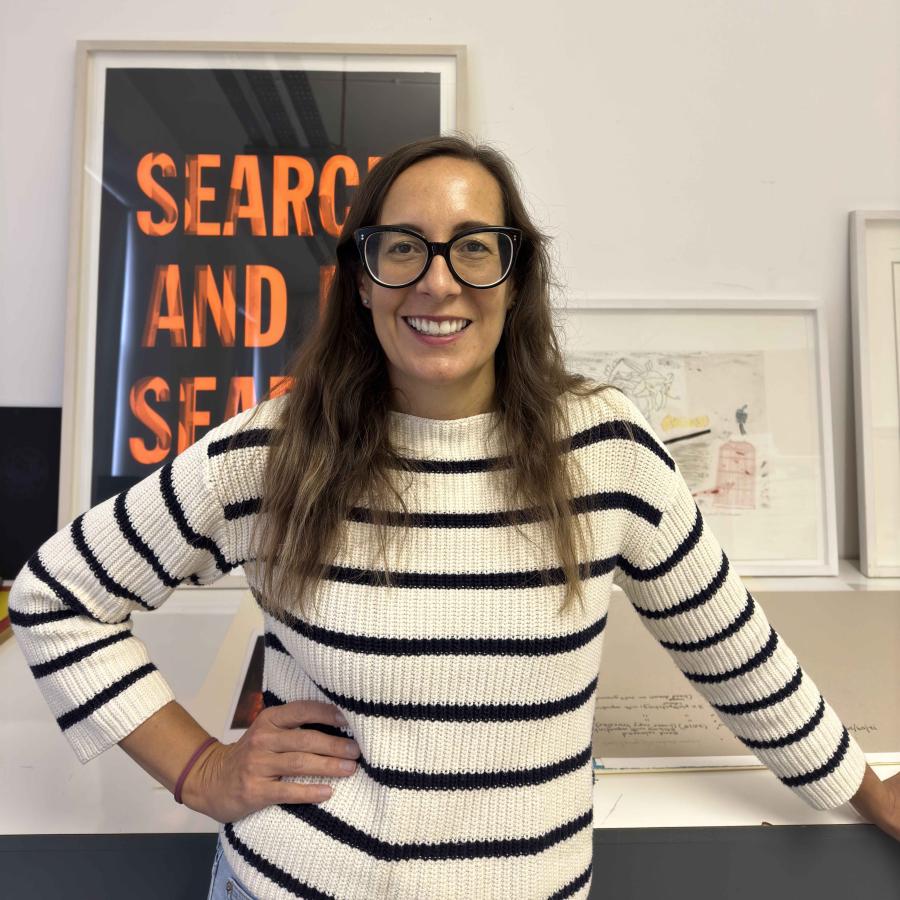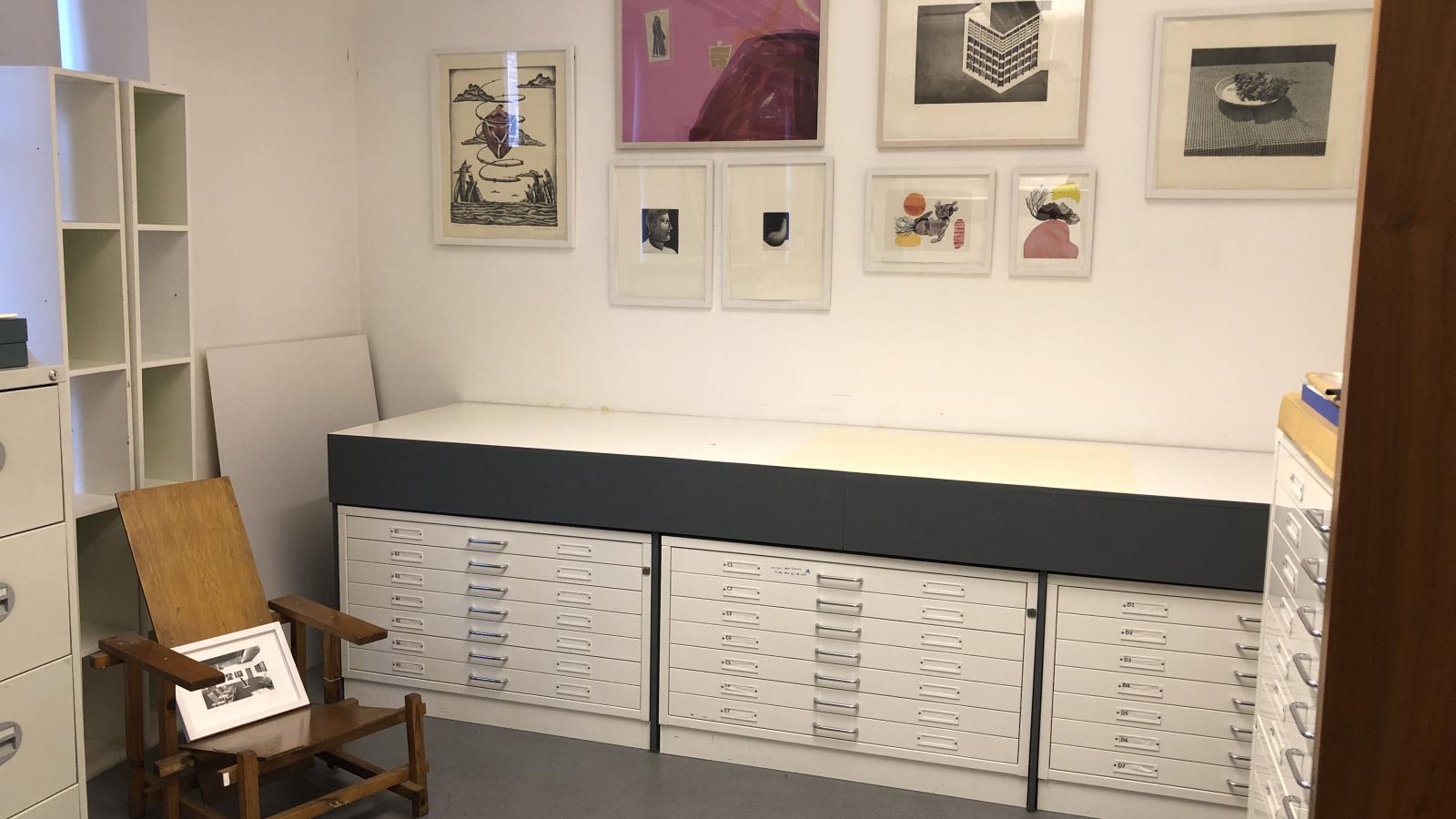Kristina Royer

Kristina Royer
“I was drawn to the programme at ECA because it had a curatorial component that balanced out the more rigid collections management curriculum.”
Kristina Royer
2018 Collections & Curating Practices - MSc(R)
Why ECA?
I was at a crossroads in my career as a practicing artist and museum worker. I knew I wanted to work with collections, particularly prints, which was my preferred medium in my own practice. I was drawn to the programme at ECA because it had a curatorial component that balanced out the more rigid collections management curriculum. I met with Kirsten Lloyd to discuss the programme and was pleased to learn how it combined group projects and independent research.

Tell us about your time at ECA
During my time at ECA, I enjoyed the hands-on experiences we had working with the National Museum of Scotland, Glasgow Women’s Library and the National Library of Scotland. Touring the stores of NMS in Granton with their endless rooms of bicycles, historic objects and out-of-commission animals is a stand-out memory.
I happened to be in the inaugural class of the programme so it was quite small which was nice. We worked on one group exhibition which we mounted at Codebase, a nearby tech hub. The exhibition dealt with themes of labour and technology, and we wanted it to reach a different audience by mounting it in a non-gallery space. During the few weeks it was up, we held workshops for Codebase staff and ECA students and we held a panel discussion with a panel of invited curators and lecturers to discuss the ideas presented in our exhibition.
I especially enjoyed the research portion of the programme and writing my dissertation. For my paper, I compared a few prominent political print collections and examined themes of preservation, access and new directions in collecting such as rapid collecting (i.e.- quickly collecting ephemera from current political movements in real-time).
I was fortunate to apply for and receive a postgraduate research bursary award which helped fund a trip to New York City to visit the PAD/D (Political Art Documentation / Distribution) at MoMA and the Interference Archive which is an open-access political art collection and library in a storefront space in Brooklyn. I was able to view prints from both collections and interview staff members. The trip informed my research in a much deeper way than if I had done it remotely.
“During my time at ECA, I enjoyed the hands-on experiences we had working with the National Museum of Scotland.”
Kristina Royer
2018 Collections & Curating Practices - MSc(R)
Tell us about your experiences since graduating
As a local, I was fortunate to be already working at the Royal Scottish Academy gallery while I was enrolled in the programme. When I was graduating, a role opened up for a contract position in collection management that I fit right into. I still had to apply/interview, but my experience combined with my new degree gave me a leg up. While there, I worked with a team to manage the NHS Lothian’s art collection. I gained lots of hands-on experience, moving artworks around to various hospital sites and coordinating conservation and storage for works that weren’t on display.
After a few years there, I found my current role as the Archive Curator at Glasgow Print Studio. They have a collection of 3,000+ prints and roughly 1,500 plates, photographs, invites, and other ephemera related to the organisation’s history. This position has given me a lot of responsibility as the main caretaker of the collection. I am creating policies, managing interns, upgrading their Collection Management System and working towards getting Museum Accreditation. A lot of what I learned from other Collection Managers during the ECA programme echoes in my ears as I work in my current role. Especially in regards to Spectrum Standards and ethics and the amount of work that goes into gaining museum accreditation.
It was useful that we were encouraged to join Scottish Museums Federation and the Museums Association as students as both groups have provided some great educational and networking opportunities both in and out of the programme. I’ve since also joined the British Arts Network and UK Registrars Group to connect with other collection management professionals and have found that an invaluable resource.
My biggest achievement since leaving ECA was working on the Glasgow Print Studio’s 50th Anniversary exhibition which was held at Kelvingrove Museum in the autumn of 2022. I got to utilise all of the skills I’d learned at ECA – researching within the collection to find artefacts, photographs and ephemera to create displays that I curated for each room of the exhibition. I also wrote all of the interpretive wall texts and worked with the curators and design staff at Kelvingrove on the design elements of the exhibition. It was a proud moment to bring my 4-year-old son to see it while it was up! (he liked it).

“Try to get part time work or volunteer at a museum or gallery that is in line with the type of collection/research you’re interested in.”
Kristina Royer
2018 Collections & Curating Practices - MSc(R)
Alumni wisdom
Join SMF (free for students!), go to as many art/museum events that interest you. Try to get part time work or volunteer at a museum or gallery that is in line with the type of collection/research you’re interested in.
Try to find a mentor within your desired field and ask them to review your CV before you start applying for jobs. Stay in touch with all of your classmates if you can! We are all spread out over the world now (Japan, Netherlands, US, UK) and it’s fun to have connections in all sorts of places.

